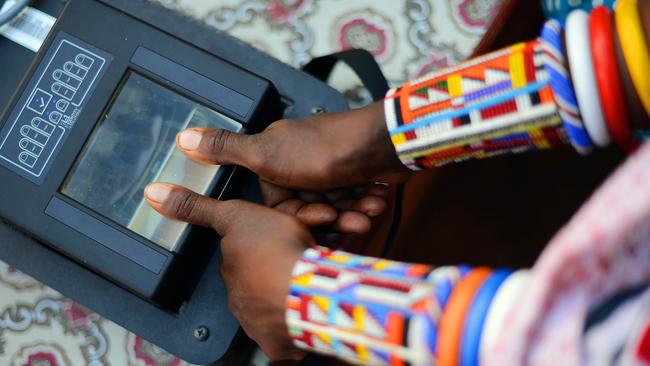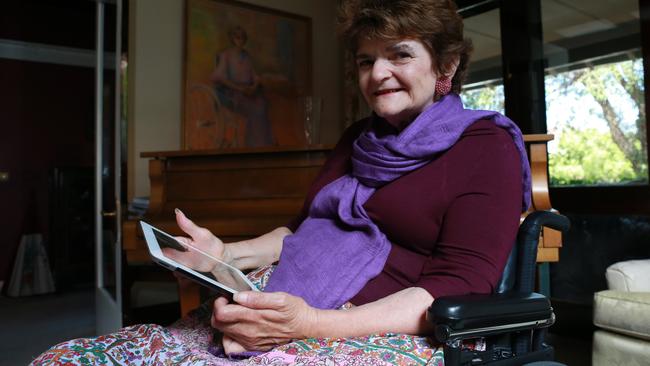Call for Australia to follow Estonia’s lead and embrace electronic voting
IT MIGHT mean the end of the sausage sizzle but would this way of voting be worth it if we got the result in minutes, not weeks?

THE election purgatory we’re currently going through would never have happened in Estonia.
Three days after Australia went to the polls, and with three million votes left to tally, we’re now being told it could take as long as three weeks until we finally know who will be Prime Minister.
If the residents of Tallinn, the picturesque capital city of this tiny county in northern Europe, took an interest in Australian politics they would probably be chuckling to themselves right now at the absurdly long time it will take to declare a winner.
The reason being that Estonia, until 1990 hidden away as part of the Soviet Union, is one of the most digital savvy nations on earth.
In the country’s 2015 general election, more than 30 per cent of Estonians cast their vote not at a polling booth or by post — but from the comfort of their PC or phone.
Some experts in the field are now calling for Australia to embrace electronic voting, partly to avoid exactly the drawn out process the country is currently experiencing.
“If electronic voting had been implemented in Australia we would have known on Saturday night what the vote was,” Dr David Glance, the director of the Centre for Software Practice at the University of Western Australia (UWA) told news.com.au.

‘WE’RE ALREADY USING ELECTRONIC SYSTEMS’
Estonia is not alone in embracing electronic voting. Some cities and states in the US have dabbled with new ways to vote; India — the world’s largest democracy — uses machines rather than paper to record the will of the people and in Australia NSW uses its iVote system for those who might struggle to get to a polling station.
But e-voting is not without its critics, with some countries — including the Netherlands and Norway — turning their back on online experiments chiefly because of security concerns.
Dr Glance said there were two main forms of electronic voting. Full online voting — making the polling place almost redundant — and more limited uses where you still queue up and grab a sausage sanger but your choice is recorded on a tablet linked to the relevant election commission.
“To a certain extent we’re already using electronic systems,” he said. “The votes are counted up and entered into a system to tally them up and they then get entered onto the AEC’s [Australian Electoral Commission] website.”

E-VOTE
In Estonia, voters log into the voting system using their ID card. A few security checks later and their ballot is cast. To reduce the possibility of people being coerced in voting contrary to their wishes, Estonians can log in as many times as they want up until election day — each new vote cancelling out the last.
In Utah, voters are sent a text message with a unique security number just before they vote. When combined with an already assigned ID number they can cast your vote.
Dr Glance can see a system whereby Australians would turn up to the polling place, as now, but cast their vote electronically. The machine would then spit out a card with the individual person’s voting intentions on that they would drop into the ballot box. These could then be scrutinised to confirm the e-vote was accurate.
But while we might be comfortable with checking our banking online, he could understand why there might be some hesitance to voting electronically.
“There is a barrier probably because voting doesn’t happen on a daily basis. It happens once every three years so the investment in electronic systems doesn’t save you a huge amount of time,” said Dr Glance.
“Secondly, there is a public perception that somehow electronic systems would be easier to manipulate.”
Indeed, a close analysis of Estonia’s online voting technology by the University of Michigan found it was entirely hackable and people’s votes could be altered by someone with enough IT know how.
‘CATASTROPHIC’
In 2015, 280,000 people used NSW’s iVote system to cast their ballot in the state election. A team, including Dr Vanessa Teague — a computing expert at the University of Melbourne — found “severe vulnerabilities” in the system that could be used to cast multiple votes, reveal voter’s identities and subvert the verification process.
“We’ve been told repeatedly that votes are perfectly secret and the whole system is secure … and we’ve shown very clearly that’s not true — that these votes are not secret and they can be tampered with,” Dr Teague told the ABC.
The NSW Electoral Commission said it fixed any issues prior to polling day and was confident of iVote’s capabilities.
In 2014, a parliamentary committee looking into electronic voting dismissed it for Australia elections. The committee’s chair, MP Tony Smith said, “Australia is not in a position to introduce any large scale system of electronic voting in the near future without catastrophically compromising our electoral integrity.”
However, he could see the benefit in moving the electoral roll, where people’s names are laboriously crossed off, moved online.
Dr Glance admits some forms of electronic voting might not be 100 per cent secure. But then neither is the current system.
“People can stroll into any polling booths without any ID, a vote is accepted and we have no idea if they are who they say they are, but those things aren’t discussed as issues and failings.”
He said voting technology based on blockchain — as the UWA based Perth start up veri.vote was developing — could be the answer.
“It has all sorts of clever aspects to it and it’s all based on cryptographic keys and the system is hard to abuse.”
Despite the resistance, Dr Glance said Australia could take a leadership position when it came to online and electronic voting.
“Australia is unique in that we have adapted to new technology really well. We have high levels of accepting PayPass [contactless] cards whereas in the States it’s at a very rudimentary level.
“We are going to see electronic voting happen. and Australia is a country that would accept it.”
As he whiles away the next few days waiting for a result, Malcolm Turnbull might well ponder if electronic voting could have saved the country from electoral limbo.
benedict.brook@news.com.au




